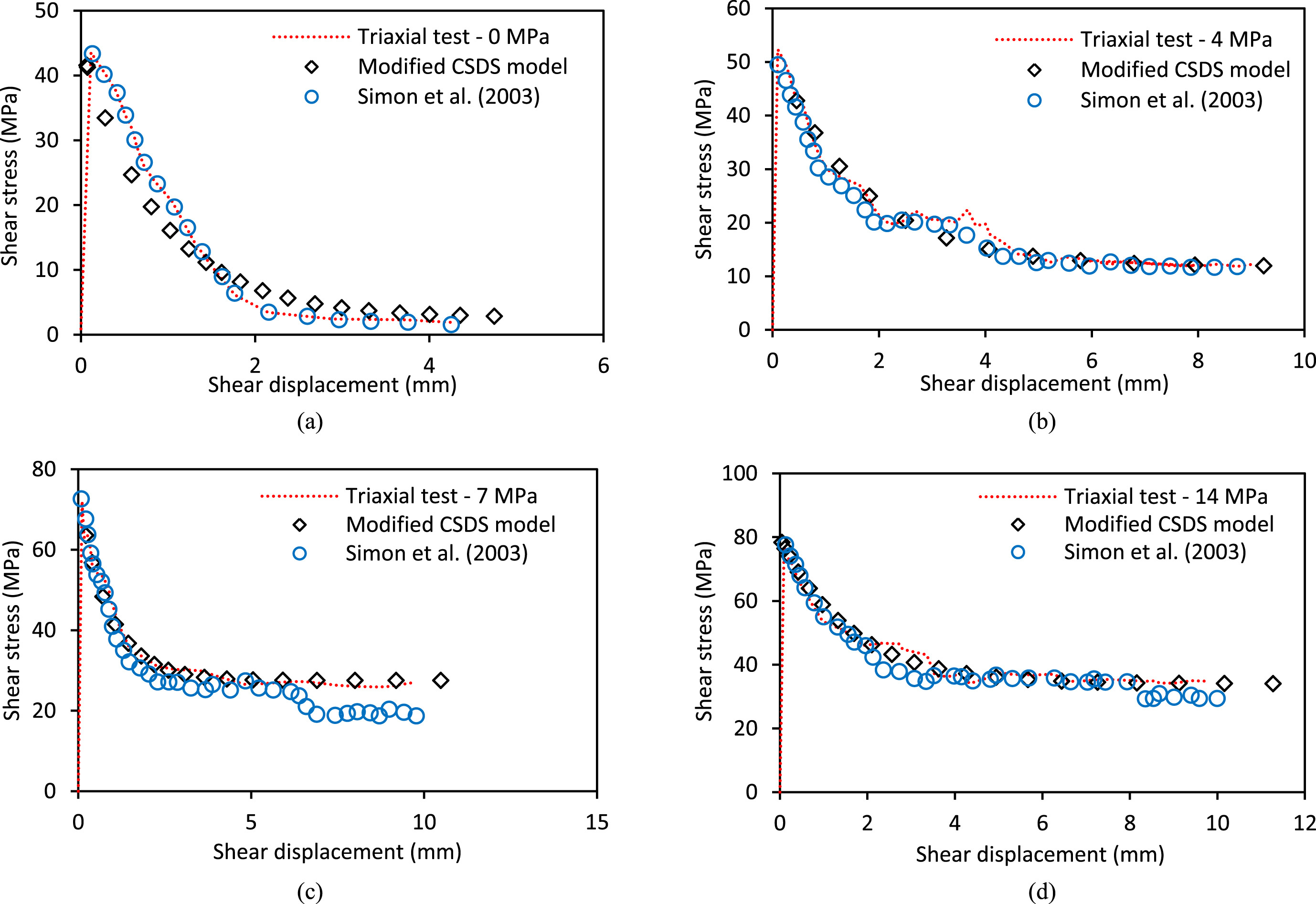JRMGE / Vol 16 / Issue 2
On the calibration of a shear stress criterion for rock joints to represent the full stress-strain profile
Akram Deiminiat, Jonathan D. Aubertin, Yannic Ethier
Show More
Department of Construction Engineering, École de Technologie Supérieure (ÉTS), Montréal, Canada
2024, 16(2): 379-392. doi:10.1016/j.jrmge.2023.07.019
Received: 2022-12-28 / Revised: 2023-05-07 / Accepted: 2023-07-09 / Available online: 2023-11-06
2024, 16(2): 379-392.
doi:10.1016/j.jrmge.2023.07.019
Received: 2022-12-28
Revised: 2023-05-07
Accepted: 2023-07-09
Available online: 2023-11-06
Conventional numerical solutions developed to describe the geomechanical behavior of rock interfaces subjected to differential load emphasize peak and residual shear strengths. The detailed analysis of pre- and post-peak shear stress-displacement behavior is central to various time-dependent and dynamic rock mechanic problems such as rockbursts and structural instabilities in highly stressed conditions. The complete stress-displacement surface (CSDS) model was developed to describe analytically the pre- and post-peak behavior of rock interfaces under differential loads. Original formulations of the CSDS model required extensive curve-fitting iterations which limited its practical applicability and transparent integration into engineering tools. The present work proposes modifications to the CSDS model aimed at developing a comprehensive and modern calibration protocol to describe the complete shear stress-displacement behavior of rock interfaces under differential loads. The proposed update to the CSDS model incorporates the concept of mobilized shear strength to enhance the post-peak formulations. Barton's concepts of joint roughness coefficient (JRC) and joint compressive strength (JCS) are incorporated to facilitate empirical estimations for peak shear stress and normal closure relations. Triaxial/uniaxial compression test and direct shear test results are used to validate the updated model and exemplify the proposed calibration method. The results illustrate that the revised model successfully predicts the post-peak and complete axial stress–strain and shear stress–displacement curves for rock joints.
Keywords: Full shear profile, Post-peak shear behavior, Rock joint, Joint roughness coefficient (JRC), Axial stress-strain curve
Article Data
Author(s) Information
Akram Deiminiat
✉️ akram.deiminiat.1@ens.etsmtl.ca

Akram Deiminiat obtained a Master degree of Civil Engineering from University of Urmia. She subsequently worked 6 years as a hydro-geo-technique engineer and project manager for a consulting firm in Iran. In 2017, she immigrated to Canada to pursue a PhD in Mining Engineering at Polytechnique Montréal, completing her thesis in 2022. Her research work led to the revision of ASTM experimental methods for specimen size requirements in direct shear tests, and the publication of four peer-reviewed journal papers. Dr. Deiminiat now works as a post-doctoral researcher at École de Technologie Supérieure (ÉTS) in Montréal, Canada. Her current research focus includes experimental investigations on the mechanical behaviors and shear stress of granular materials and rock joints for slope stability problems; and (2) theoretical study and numerical modeling of constitutive shear models with respect to time. Dr. Deiminiat has co-authored over 15 research publications and taken part in a number of technical symposia and international conferences.

